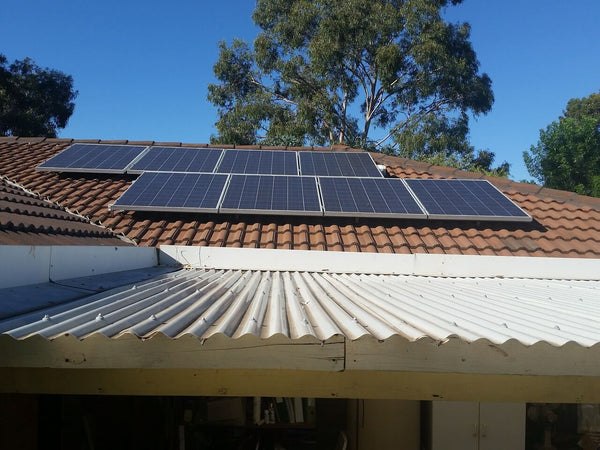Table of content

Introduction
Electric scooters are a cheaper alternative to fuel-powered vehicles and are great vehicles to enhance mobility through crowded areas. Plus the design is collapsible and makes it easy to park and carry around offering more portability. Some electric scooters offer seat availability that helps you sit during long hours of journey.
The United States has experienced a significant popularity of electric scooters since they were introduced to the US market. There are many factors that have contributed to the immense popularity and rise of electric scooters, like advancements in technology and awareness of the environment, along with boosting demand for alternate modes of transportation, especially in urban areas.
With the rising popularity, the need for sustainable charging solutions for electric scooters is also necessary to achieve environmental sustainability, efficiency of energy resources, and a better adoption of electric transportation.
What is Solar Power?
Solar energy is a renewable energy derived directly from the Sun, which means it is never-ending. We can harness and convert this form of energy into a power that can be used in many forms, making it a sustainable source that is abundant and friendly to the environment.
Solar Panels: How Do They Work?
Solar panels help convert sunlight into electricity, and this process is known as the photovoltaic effect. More straightforwardly, there are individual units called photovoltaic (PV) cells in solar panels, and they are made with materials like silicon, which act as semiconductors.
However, it would help if you kept in mind that certain factors can influence the efficiency of solar panels, such as;
- Weather conditions
- Solar cells quality
- Angle and orientation of the panels
Solar Panels: Benefits
- It is a renewable source.
- It is environment friendly as it does not produce any air pollutants or emissions of greenhouse gasses, thereby being a more sustainable and clean energy source.
- It helps reduce electricity bills with reduced dependability on electric supply by grids.
- Solar energy systems can be decentralized, and their deployment can be done on a smaller scale, even as an individual rooftop/vehicle installation.
Solar Panels: Everything You Need For Charging Electric Scooters

Get a detailed overview of how solar panels work for charging electric scooters.
Solar Charging Setup: Components Required
Making a solar charging setup work incorporates many components that can aid in capturing, storing, and utilizing solar energy to an optimum level. Here is a complete list of some essential elements that you may require to start with your solar charging setup:
- Solar Panels
You can decide upon the number of solar panels along with the required voltage depending on your energy requirements and the availability of Sunlight.
- Charge Controller
Opt for a charge controller that matches your solar panel system voltage and battery bank.
- Battery Bank
Opt for batteries with deep cycles, and remember your energy storage needs to decide the battery size.
- Inverters
Are you looking for an inverter with the optimum capacity for your energy needs and a type that goes hand in hand with your system? For, e.g., Basic appliances require sine waves, and sensitive appliances require pure sine waves.
- Connectors and Wiring:
Using appropriate connectors ensures that the connections are secured, whereas proper wiring and gorge help keep an eye on the voltage and current in your system.
- Structure for mounting and support
Look for a mountain structure that is apt for your location, considering solar exposure and wind load.
- Disconnect Switches and Grounding Equipment
Go to install disconnect switches to maintain safety by isolating specific components. Also, watch the following local electrical codes required for grounding.
- System for Monitoring
Look for a compatible monitoring system that helps provide real-time and user-friendly monitoring of your solar charging setup and lets you know about battery status and the system's efficiency.
Solar Panels Suitable for Charging E-Scooters
The most appropriate type of solar panels for charging e-scooters are foldable and are on vehicle variants with 100 W or 150W capacity. For example, if you have an e-scooter with a battery of 12/24/48 volts, then you require a solar panel capable of providing a similar output. With varying sunlight, you need a charge controller to monitor PV output.
If you have a portable PV panel of 25 watts, it will charge your e-scooter battery in around 120 minutes.
Solar Panels: Installation Process
The size of an e-scooter is relatively small to accommodate a solar panel to provide efficient energy to charge the battery in time. This is why you need to put up a panel separately, park your scooter alongside, and use a cord to attach both. Additionally, it requires an inverter to produce the right amount of voltage and the frequency needed to get the charging done. If you need to reduce the charging time, you require multiple panels.
Process of an E-Scooter Charging through Solar Energy
Check out how an e-scooter gets charged with solar energy:
- Sunlight absorption: As soon as solar panels are hit by photons present in sunlight, these photons are absorbed by the semiconductor material of PV cells.
- Electric Current Generation: Once the absorption is completed, electrons are released from their atoms, and an electric current is generated, creating a photovoltaic effect.
- Electric Field Formation: A solar panel has an electric field that aids in directing the electron flow, leading to a one-way flow of electric current.
- Metal Contacts: Metal contacts on the top and bottom portion of the PV cell allow the generation of electric current that can be used externally.
- Electricity through Direct Current: Solar panels produce direct current (DC); however, appliances of most common households operate on alternate current (AC). So, it would help if you had an inverter for conversion.
- Grid/Battery Connection: Once the energy is converted, you can use it to charge your electric scooter's battery.
- Net Metering: Once you connect the solar panel system to the grid, you can enjoy generating excess electricity during sunny days.
Challenges and Considerations
While solar panels are an environment-friendly and sustainable option for charging an e-scooter, they come with their challenges and considerations;
The charging of any solar panel is highly dependent on sunlight. So, With varying weather conditions such as windy, stormy, snowy, or rainy, the solar panels cannot provide energy for charging an e-scooter.
To consistently charge the e-scooters, you require an efficient storage system for storing excess energy during sunny periods and using it during off days.
You require a larger space for accommodating solar panels; otherwise, their efficiency and capacity must be used differently. It would help if you optimized the available area by selecting high-efficiency solar panels.
If you have a budget constraint, you may feel the purchasing and installation cost of solar panels at an initial level to be relatively high. However, if you consider and evaluate the savings on a longer-term note, you may get some potential incentives. Over time, if the solar panels produce more energy than required, you may make money by selling off excess electricity units.
Conclusion
E-scooters with a solar-powered charging option offer a good range of benefits that go hand in hand with conservation of environment, sustainability, and cost-effectiveness. It also reduces carbon emissions and helps in creating green transportation. Over a more extended period, you may experience a lower operating cost and reduced electricity bills. But you may find the process of its installation somewhat tricky and tedious, and there are a few challenges that hinder the proper charging of an e-scooter.
However, if the challenges and considerations are adequately addressed, the development of an effective and sustainable solution for solar charging for each scooter is possible.

 Leon Wong
Leon Wong 





